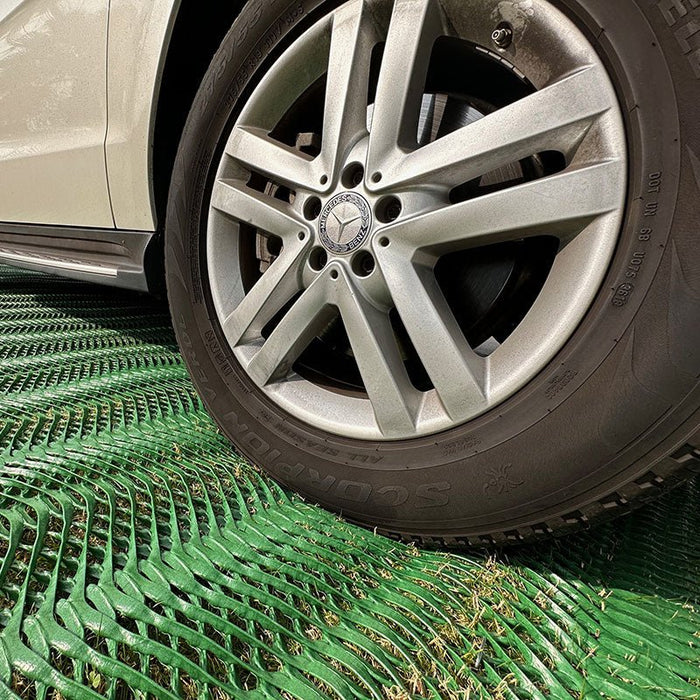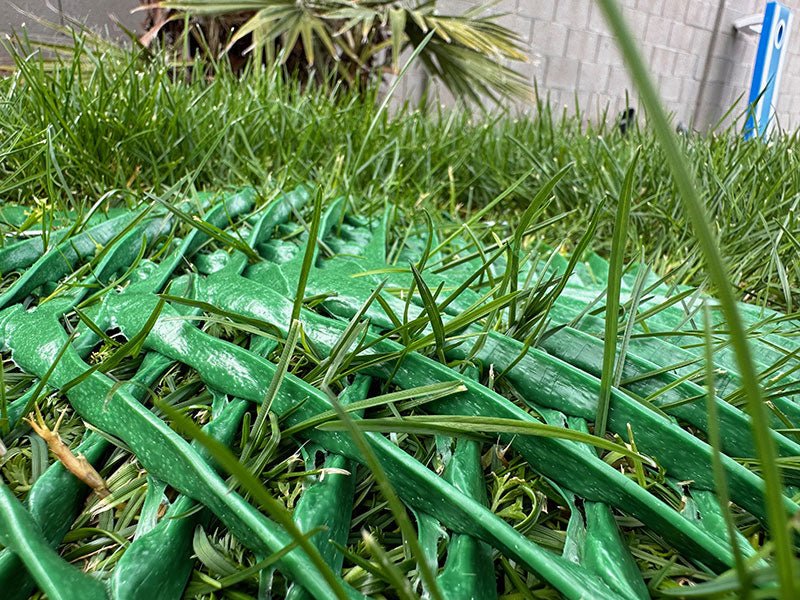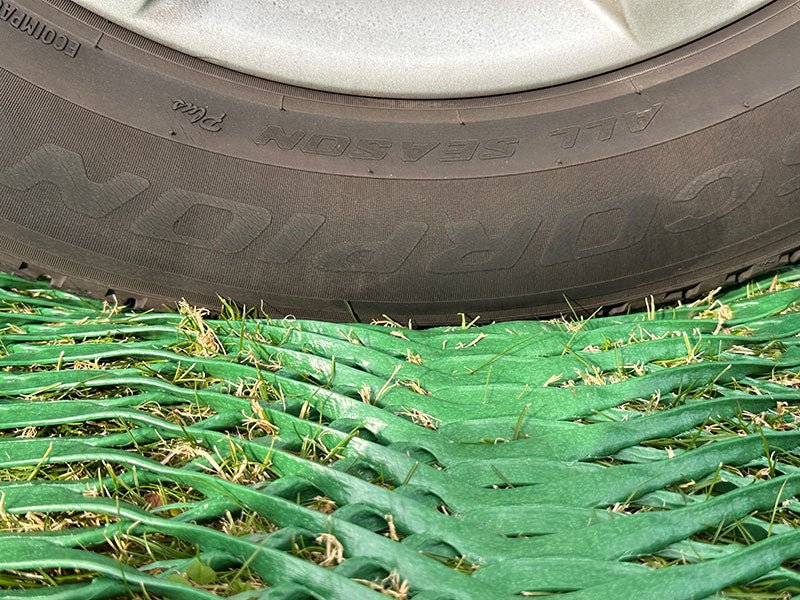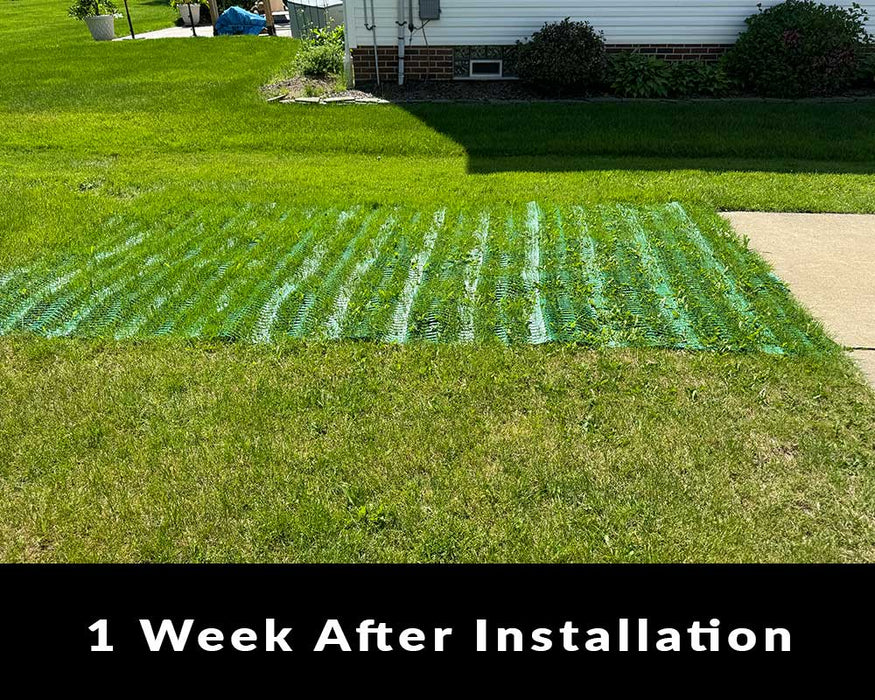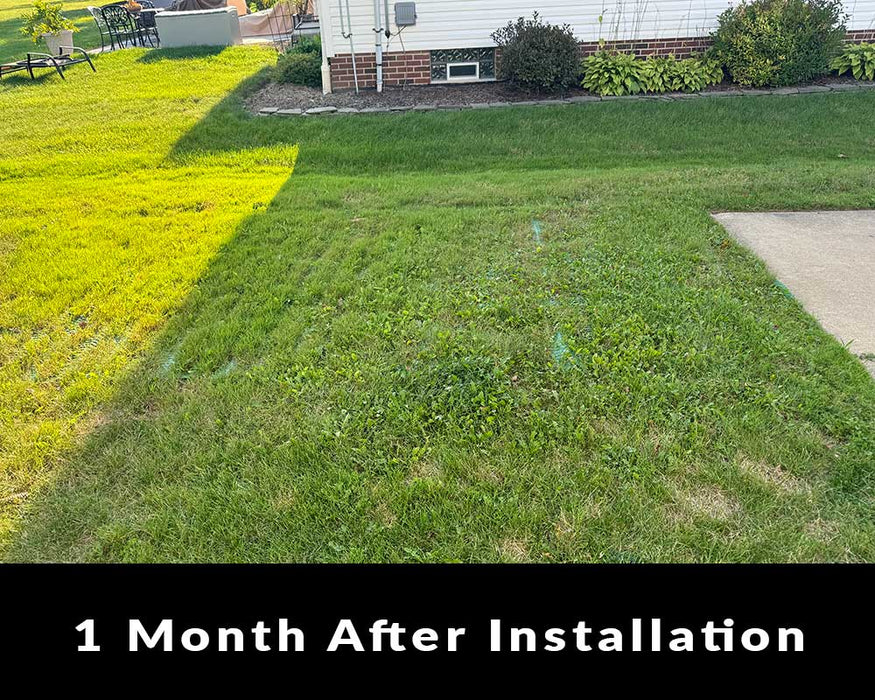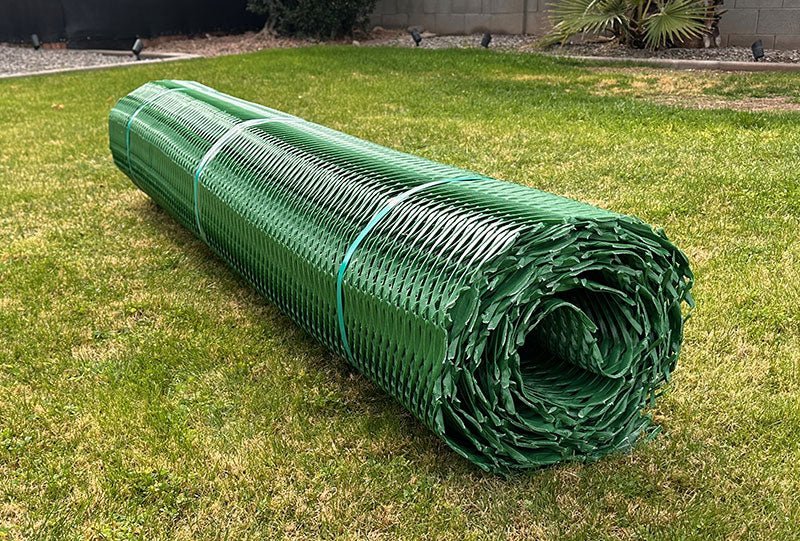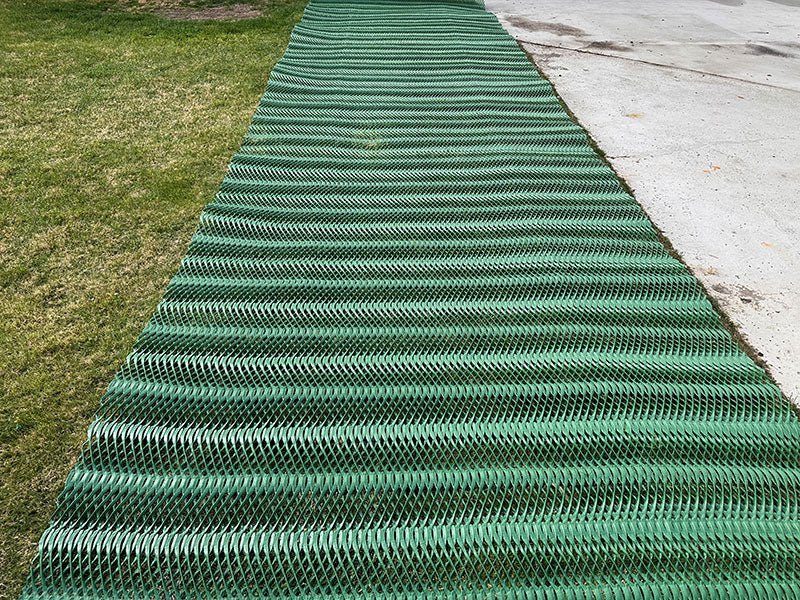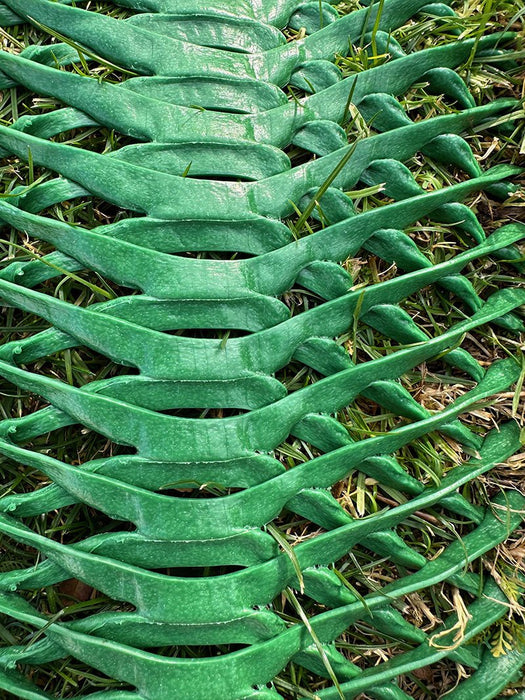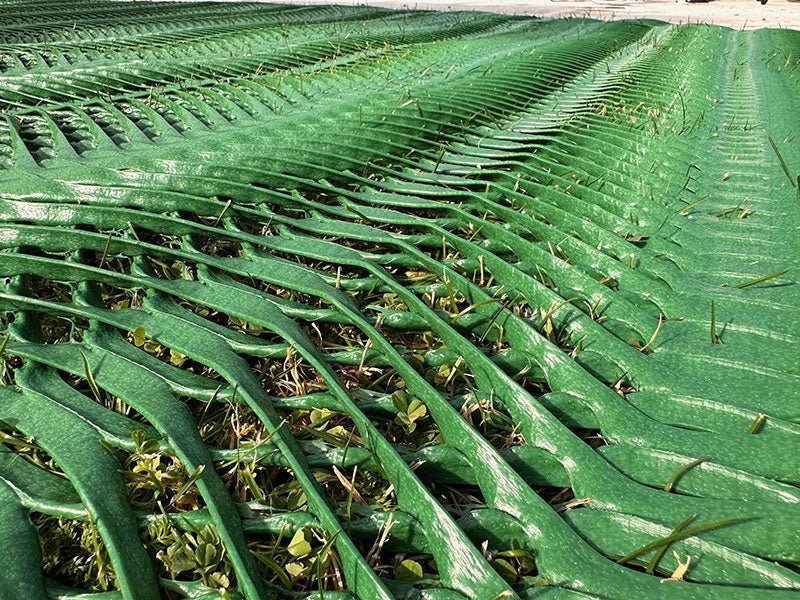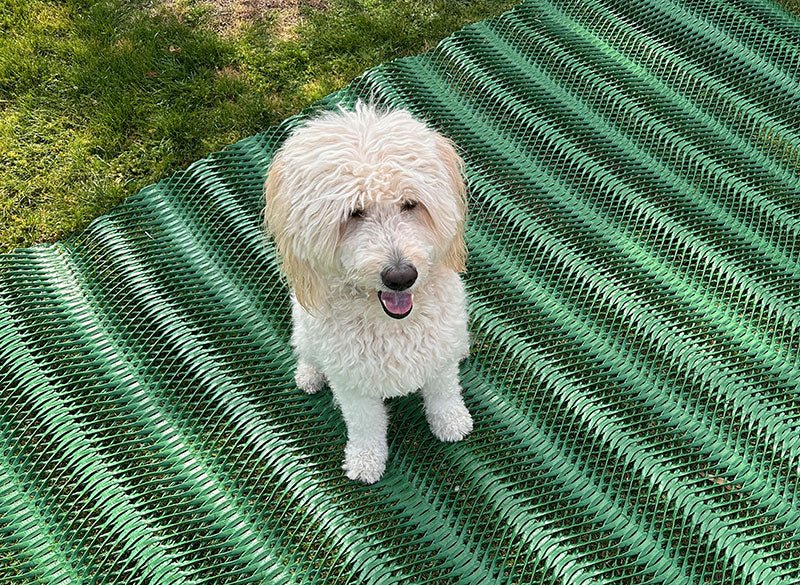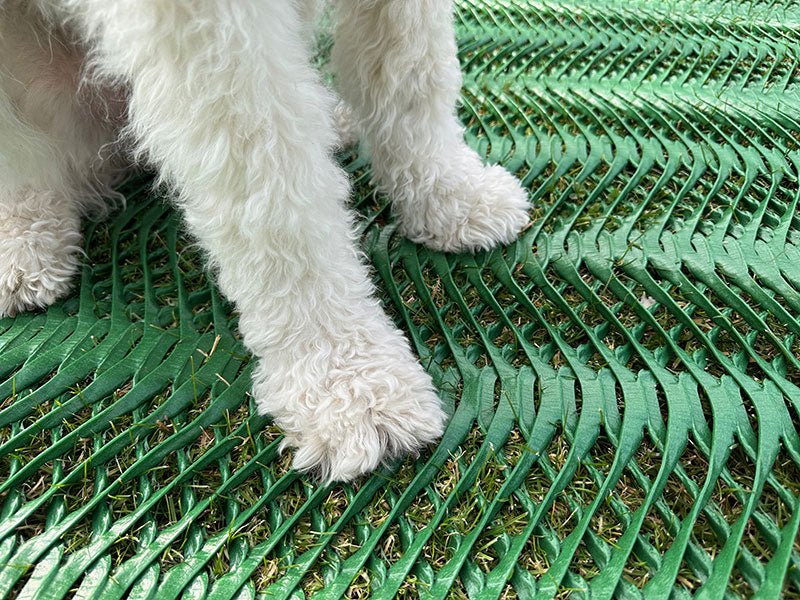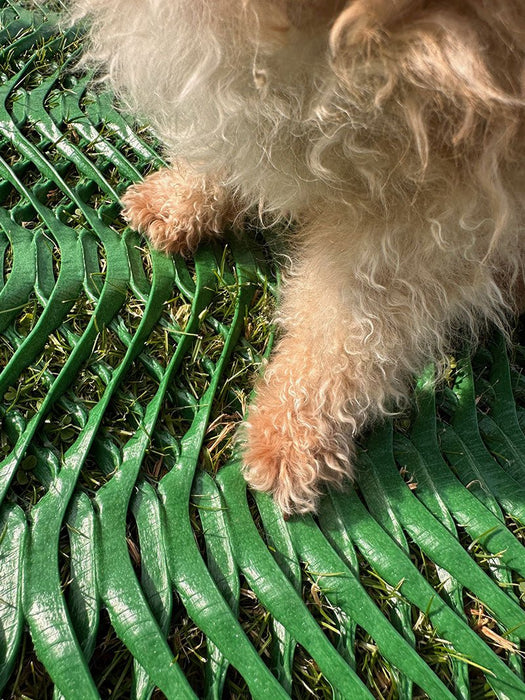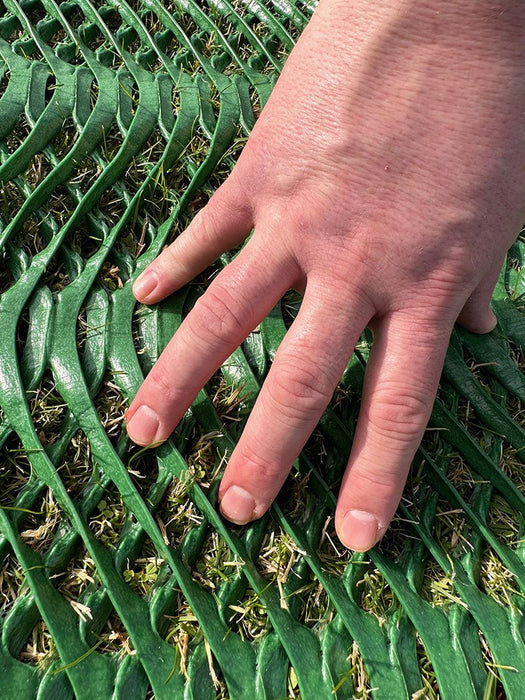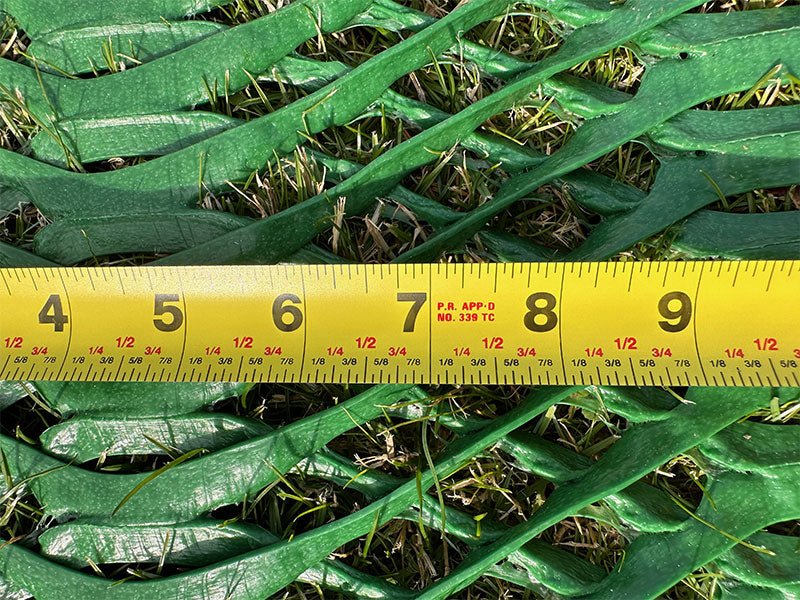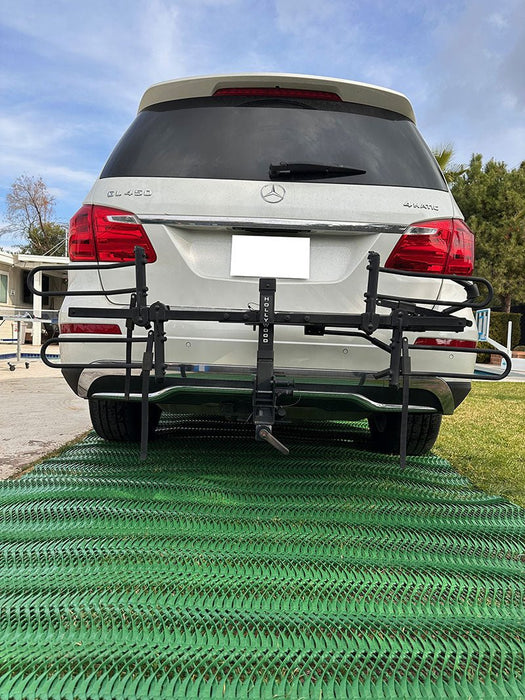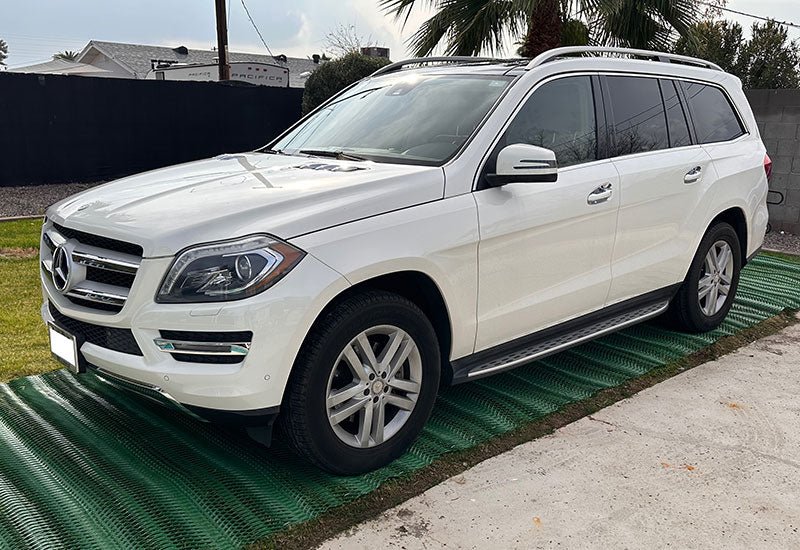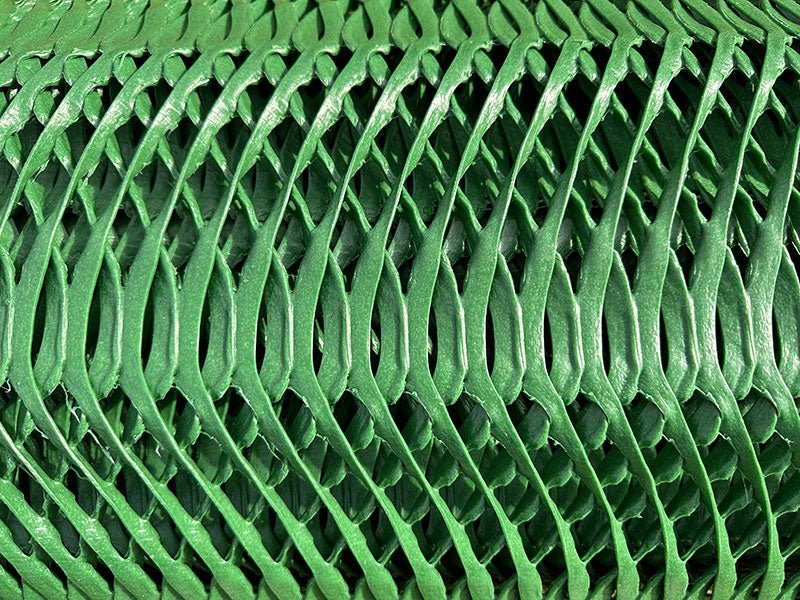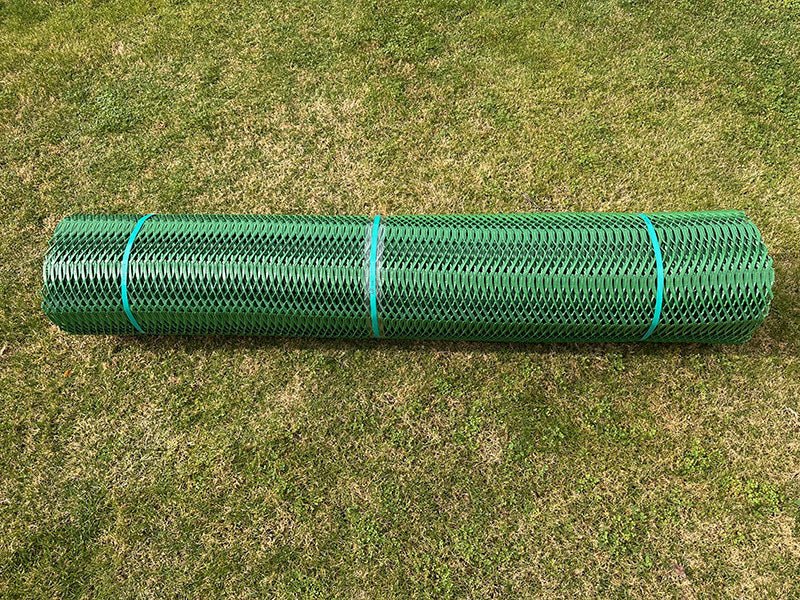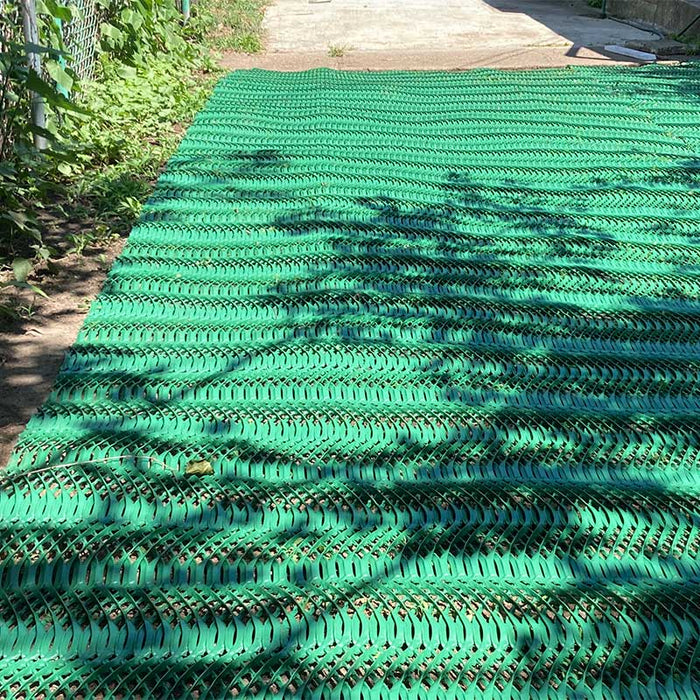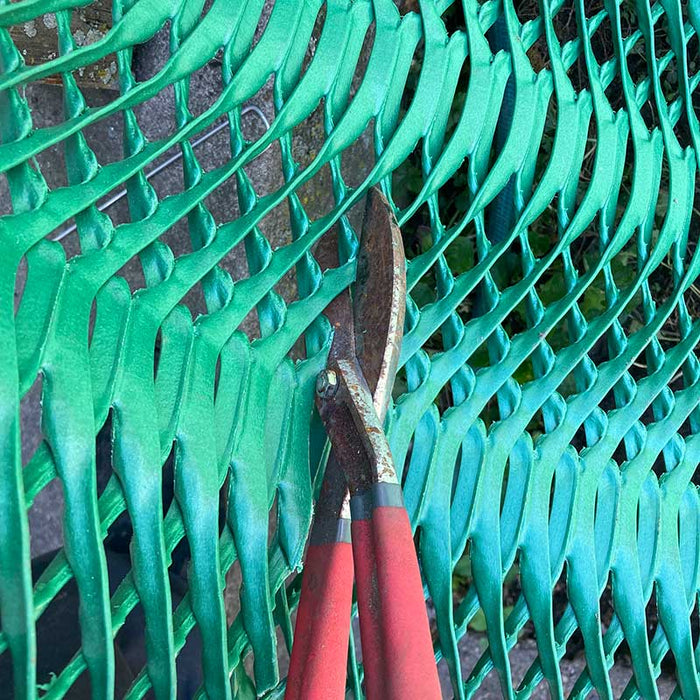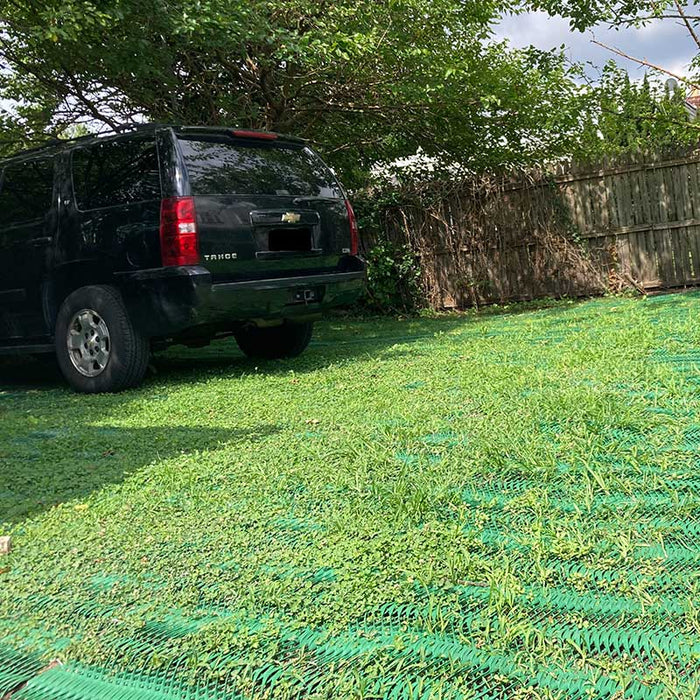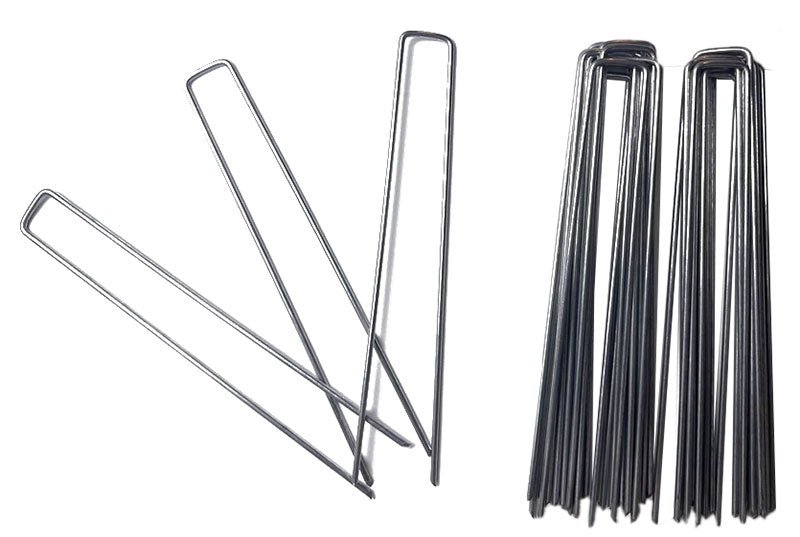Green Plastic Mesh - Heavy-Duty
FREE SHIPPING
Engineered for resilience, it boasts UV resistance to stand up against the elements, ensuring long-lasting performance. The mesh's inherent flexibility allows for a perfect fit with the natural landscape, facilitating an easy setup while preserving the aesthetic appeal of your outdoor areas.
The Green Plastic Mesh is versatile, suited for a range of uses from bolstering commercial parking to creating safe pet zones and walkways. Proudly made in the USA, this mesh marries high quality with environmental responsibility, offering a dependable and eco-friendly option for ground protection.
Opt for the Green Plastic Mesh to keep your lawns vibrant and intact, enabling them to withstand daily traffic without losing their beauty or functionality.
Size: 6.7' x 25' (167.5 SF)
Roll Weight: 60 lbs

